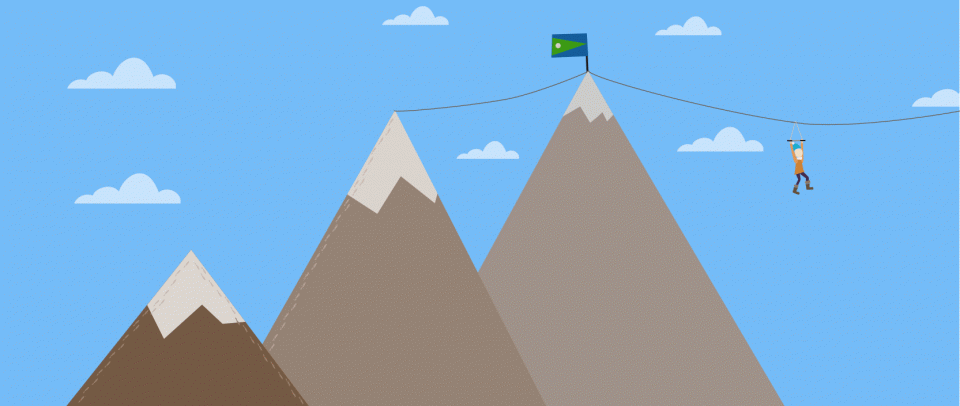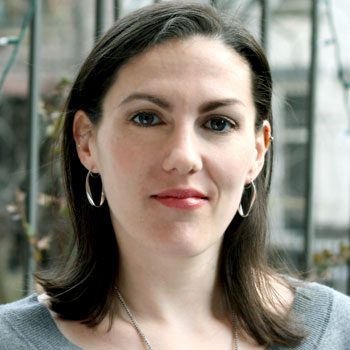Keeping Creative Passions Alive: How to Bridge the Work/Life Gap of the Creative
Hello, and welcome to the new series: “Keeping Creative Passions Alive: How to Bridge the Work/Life Gap of the Creative”. This series is dedicated to helping all creative types – from designers to developers to writers to whomever creates something from their work – to close the seemingly widening gap between their work and non-work lives. My hope is that by the end of the series, your outlook on this gap will have shifted, causing your creative work to have more depth, and, more importantly, causing you to have a lighter load to bear.
Where We Are Now
We start our journey with this first post, exposing the current state of where we creatives are in relation to this work/life gap. Our current state is an interesting one, indeed. We creatives are, well… creative, but what does that really mean? Webster’s defines the term creative as “having or showing an ability to make new things or think of new ideas”. This is a pretty good general definition of what we do when we are “being creative”. In our world, however, it is not just about making new things or thinking of new ideas. We have to take this a step further by first, making sure our ideas or things are actually “new”, and next, guarantee our new ideas or things fit the needs of our business, customers, or users. Basically, we have to make sure our new ideas or things work within an ecosystem to generate better results.
Thing is, this whole creative concept, coming up with new ideas or making new things and fitting them into the ecosystem, takes two key ingredients. The first is our brain. We have to understand the ecosystem that our new things should fit. To do this we give our brain time to observe the ecosystem and see the gaps and opportunities within it. In order to do that, we creatives need to have a certain connection with our work. We’re not just replicating a widget or painting the side of a toy the same color over and over again – we are creating new things or ideas. Thus, we have to use all of our senses, emotions, and passions to have empathy, understanding, and knowledge about the ecosystem and its needs in order to come up with the best solutions or improvements.
We have to understand the ecosystem that our new things should fit.
The second key ingredient is time. Doing what I just mentioned, that is, understanding the ecosystem, the gaps and opportunities, then thinking of a new thing or idea to fill the gaps or take advantage of the opportunities, takes awhile. Now I’m not trying to say that one can’t be creative in a hurry, but I am trying to say if you are a creative working to create the best solution possible for an ecosystem, that’s gonna take a varying amount of time.
The Gap Emerges
All of this is well and good, until… we work in an environment based on a high volume of new ideas and things created in super fast amounts of time and as cheap as possible. What do I mean? I mean the problem that we creatives have that opens up this work/life gap, the result of working in a non-creative friendly world.
Most companies and clients out there work in a world driven by logic and numbers when making decisions; where they have proof and evidence as purpose and need, where they treat the business itself as a factory that outputs goods (read Dave Gray’s The Connected Company to understand more about this concept), where they need our work now no matter how good it is at solving any actual problem. The fact that most of us out there work in companies or organizations whose principles (listed here) are in direct conflict with our ability to create new ideas or materials causes us many problems; least of which is opening up our work/life gaps.
The first issue is that due to the short timelines many of us are forced to work within, we become disconnected emotionally from our work. We spend way more time working on outputs than understanding the ecosystem in which our creations operate. This understanding time includes reflection, curiosity, playing… all activities that there isn’t “time for”. Unfortunately, when decoupling the emotional and understanding side of creativity from the actual creating side, there are repercussions.
We spend way more time working on outputs than understanding the ecosystem in which our creations operate.
These repercussions don’t just fall on our companies, who may receive lower quality creations and ideas due to us not having the time to vet them, but these repercussions also fall on us. In fact, they mainly fall on us. And they appear in ways that aren’t good for our non-work life. For instance, we become jaded about the effectiveness of our contributions to our companies. We lose the ability to have fun and be passionate about the work we are doing. We create this place in our brains for work stuff and separate that from life stuff. Basically, we become robots in a system of machines. If being a creative is all about marrying life observations, passions, and ideas, to work ecosystems that create new things or ideas that help make our companies better, how can we possibly be a creative in this non-creative world (without starting the revolution – which will not be televised)? How can we bridge this gap that we are almost forced to create and stay passionate about our work without ruining our lives?
Bridging the Gap
That is, of course, what we’ll be examining in this series. We’ll talk about how to bridge this gap that we have to create in our brains, and how to stop spending all of our time on the work part instead of the life part. We’ll also talk about how to just, flat out, love work again.
We’ll do all of this by taking a journey. First to understand how to realize and revitalize your passions. Then to understand the importance of redefining terms like success, work and play. Next we’ll expose a great kept secret, the idea that work/life balance is not only a myth, but, is the exact opposite of what you want in your creative life. We’ll talk about how you can bridge the work/life gap, even though work/life balance is a myth. And, lastly, we’ll talk about how to adjust when your passions change, and how to keep these passions alive.
I realize that many of you may be thinking this all sounds too good to be true. After all, I’m an independent and don’t have to worry about the man. How could my advice possibly help the hard working office workers out there? Furthermore, how can it really be possible to bridge this whole work/life gap IF you are claiming there is no such thing as work/life balance? Lastly, let’s say that what I’m saying IS possible, how can I possibly figure this all out in one blog series?
Well, dear reader, I promise you that what I’m claiming is not to good to be true, AND that it applies not only to the independents of the world, but to the agency and in-house workers as well. As to your questions of if I can accomplish all of this in one blog series, well you’ll just have to stay tuned to find out.
If you do decide to stay tuned in and employ the methods that I’ll write about, you’ll see that you can and will bridge the work/life gap that you face. Doing so will not only make your creative works better and more interesting, but you will be a better you! You’ll enjoy work more. Your creative passions will reignite. You’ll enjoy your non-work life more, and you’ll see the stresses of the balance you are trying to maintain ease.
So stick around, and reap the rewards of bridging the work life gap of the creative. In our next post, we’ll jump into realizing and revitalizing your creative passions, what doing so means, and how this is the first step to building our bridge. I’m looking forward to it, and hope you are too!





